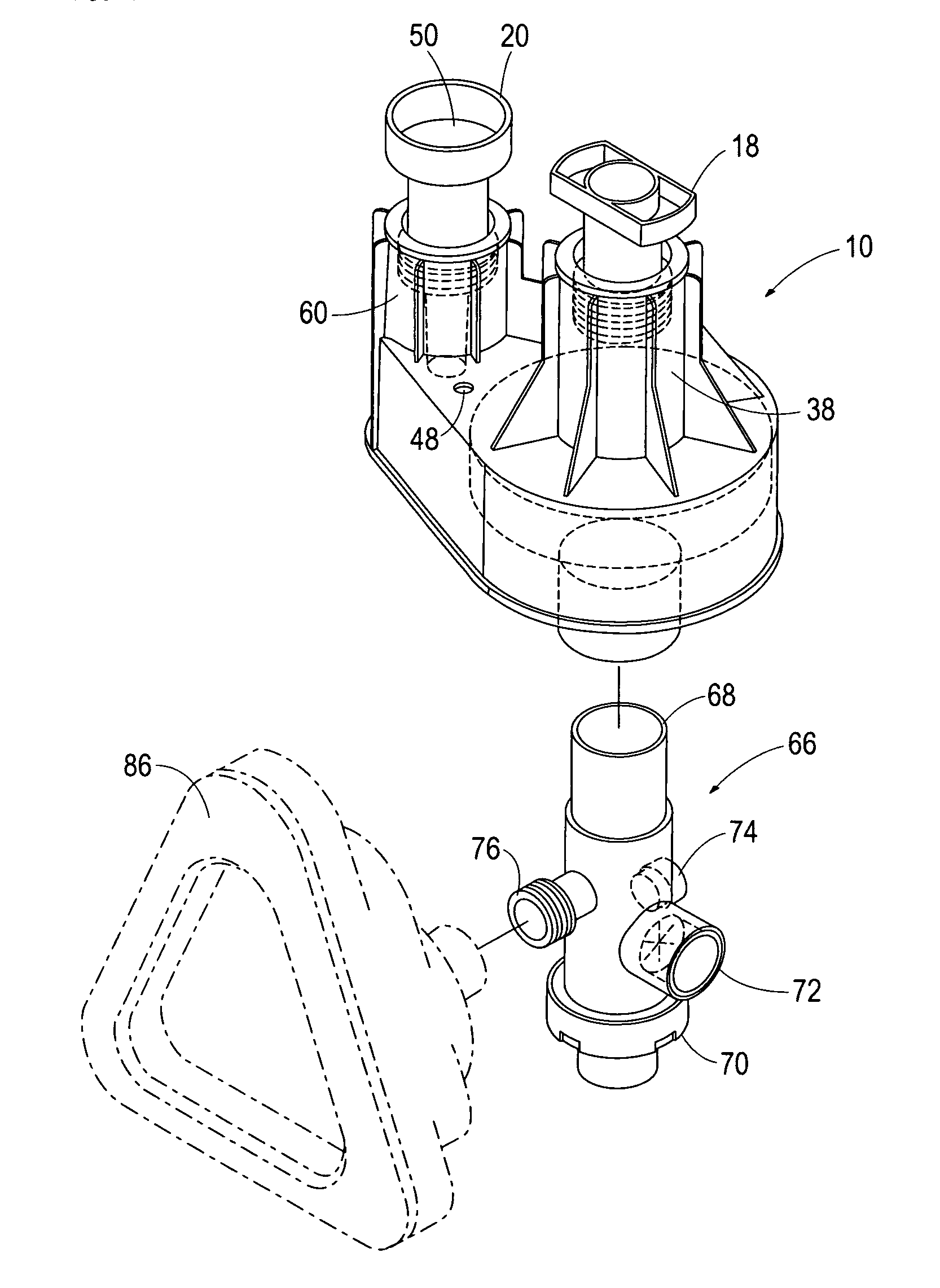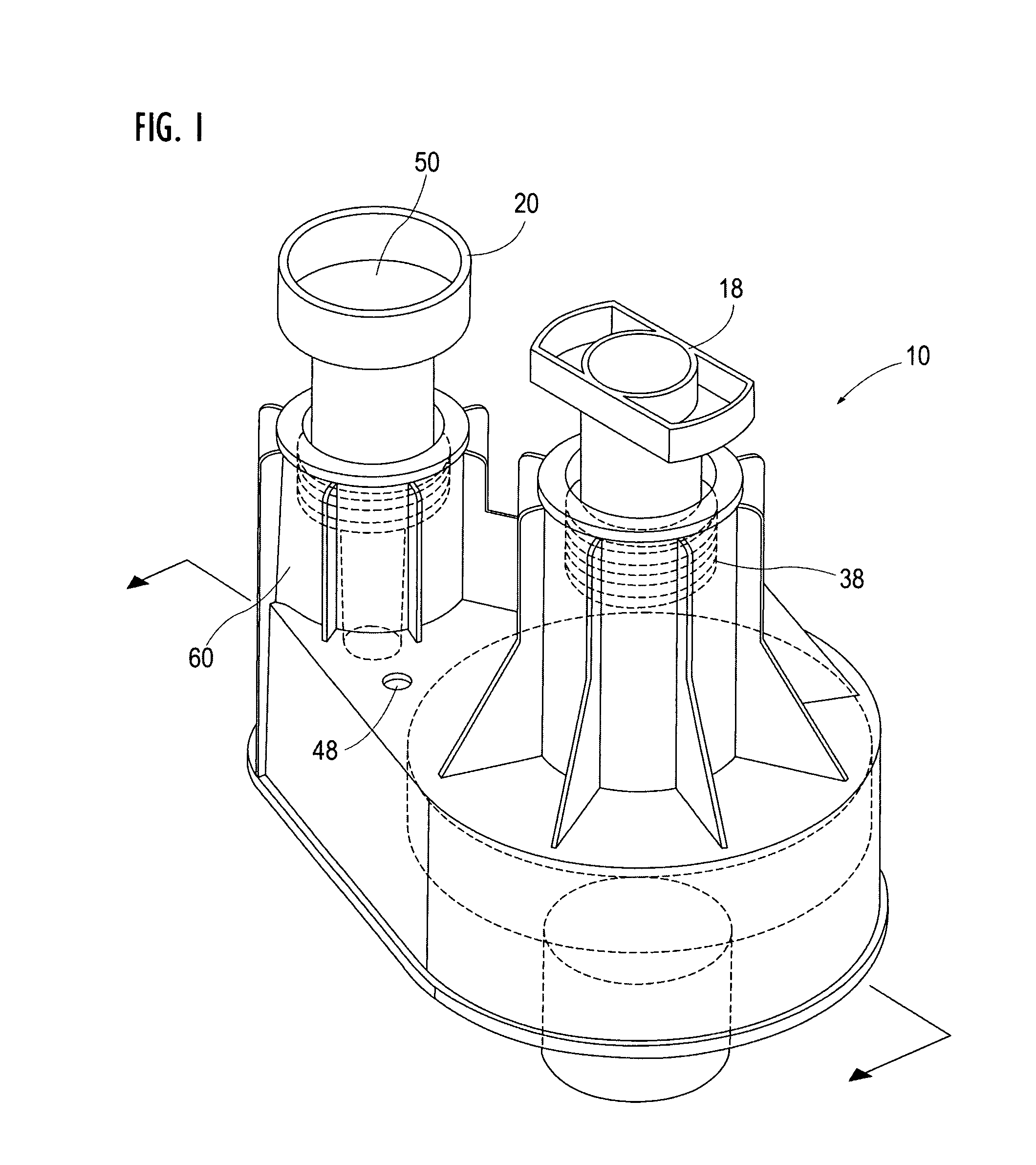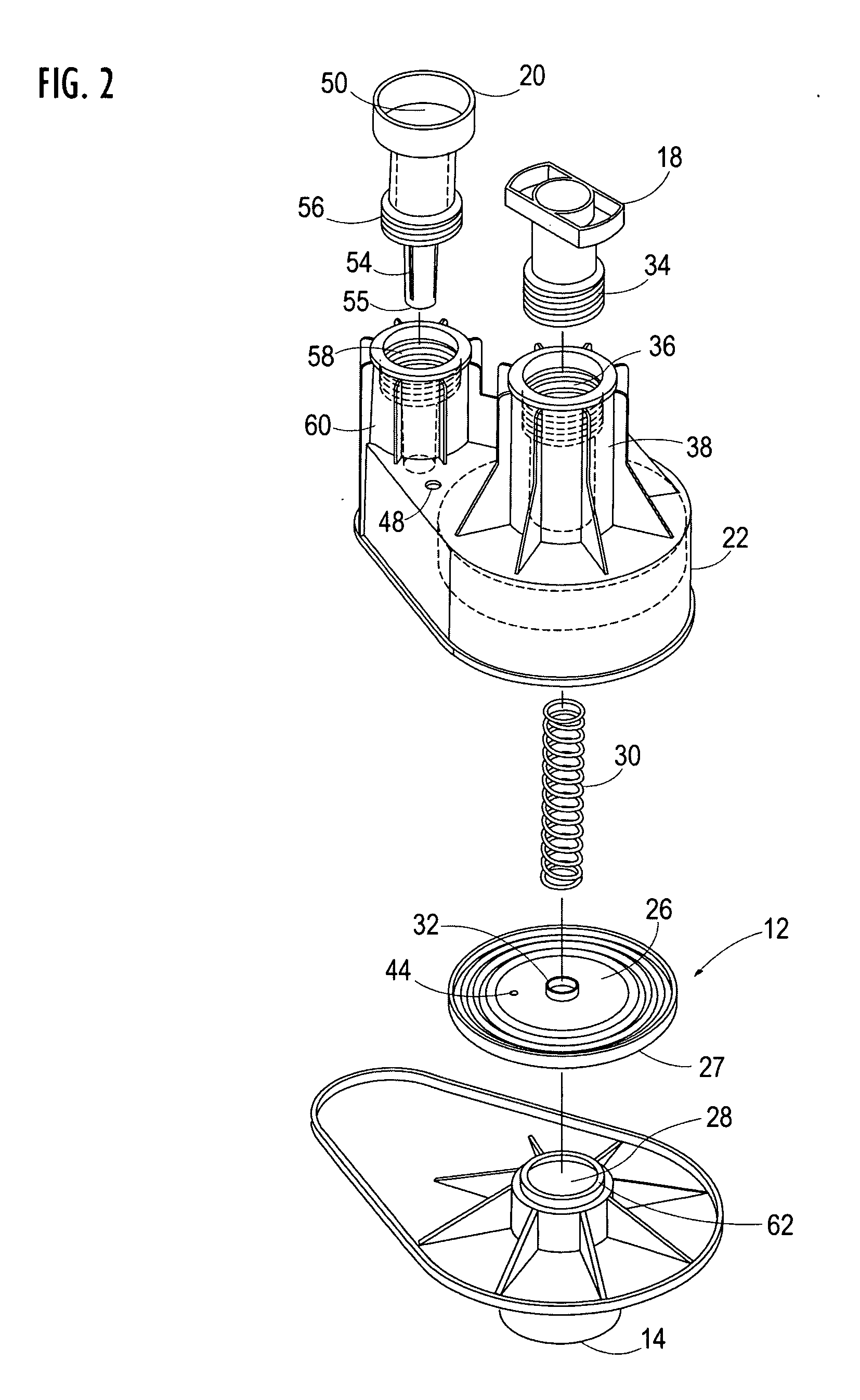Enhanced manually actuated pressure controlled modulator technology
a technology of pressure control modulator and manual action, which is applied in the direction of respirator, respirator, respirator, etc., can solve the problems of too small gas per breath volume (tidal volume) for patients, easy misuse of manual resuscitation device, and too quick respiratory ra
- Summary
- Abstract
- Description
- Claims
- Application Information
AI Technical Summary
Benefits of technology
Problems solved by technology
Method used
Image
Examples
Embodiment Construction
[0107]While the present invention is susceptible of embodiment in various forms, there is shown in the drawings and will hereinafter be described a presently preferred embodiment of the invention, with the understanding that the present disclosure is to be considered as an exemplification of the invention, and is not intended to limit the invention to the specific embodiment illustrated.
[0108]For illustrative purposes the present invention is embodied in the apparati generally shown in FIG. 1 through 7. It will be appreciated that the apparatus may vary as to configuration and as to details in the parts without departing from the basic concepts as disclosed herein.
[0109]Referring first to FIG. 1, FIG. 2, and FIG. 3 a constant flow, pressure modulator apparatus 10 in accordance with the preferred embodiment of the present invention is generally shown. As will be seen, the apparatus comprises a spring-loaded diaphragm assembly 12, an inlet chamber 14, a flow restrictor conduit 16, a p...
PUM
 Login to View More
Login to View More Abstract
Description
Claims
Application Information
 Login to View More
Login to View More - R&D
- Intellectual Property
- Life Sciences
- Materials
- Tech Scout
- Unparalleled Data Quality
- Higher Quality Content
- 60% Fewer Hallucinations
Browse by: Latest US Patents, China's latest patents, Technical Efficacy Thesaurus, Application Domain, Technology Topic, Popular Technical Reports.
© 2025 PatSnap. All rights reserved.Legal|Privacy policy|Modern Slavery Act Transparency Statement|Sitemap|About US| Contact US: help@patsnap.com



